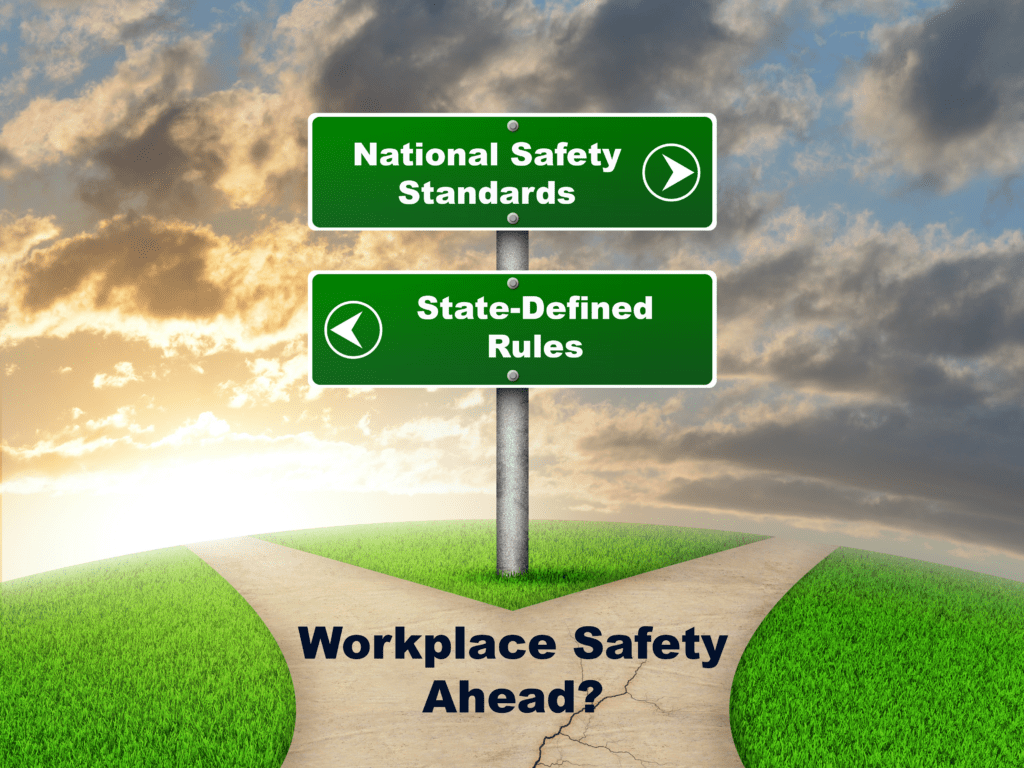As a leading provider of SDS management solutions, TotalSDS is closely monitoring the recent introduction of the “Nullify Occupational Safety and Health Administration Act” or “NOSHA Act” by Representative Andy Biggs, which would ultimately repeal the Occupational Safety and Health Act. This proposed legislation, if passed, could dramatically reshape the landscape of workplace safety regulations in the United States.
If enacted, workplace safety regulation would shift from the federal level to individual states and private employers. While this approach supports localized control, it could dramatically reshape the landscape of workplace safety regulations in the United States.
Differences in Workplace Safety Laws Across States
Even before the NOSHA Act, companies already face challenges complying with differing state regulations:
- California enforces Proposition 65 warnings and stringent air-quality standards.
- Pennsylvania, New Jersey, and New York each maintain unique hazardous substance disclosure rules.
- Many other states impose specific labeling or chemical threshold regulations that exceed federal requirements.
These variations already require businesses to allocate significant resources to meet state-by-state compliance. Without OSHA’s centralized authority, regulatory fragmentation could expand further, forcing companies to navigate up to 50 distinct compliance frameworks.
Implications for Companies Operating Across States:
The absence of a unified federal standard could create significant challenges for businesses, particularly those operating across multiple states. Companies would need to adapt to a more fragmented regulatory landscape, increasing compliance burdens and operational risks. Key concerns include:
- Inconsistent Regulations:
- Varied State Rules: Without OSHA, each state could set its own hazard communication standards, leading to inconsistencies.
- Compliance Complexity: Companies operating in multiple states would need to navigate different regulations, complicating compliance.
- Increased Administrative Burden:
- Resource Allocation: Businesses would need more resources to track and implement varying regulations.
- Frequent Updates: Constant revisions would be necessary to stay compliant with evolving state laws.
- Supply Chain Disruptions:
- Interstate Commerce Issues: Differing SDS and labeling requirements could slow product shipments and require modifications.
- Distributor Challenges: Companies managing multi-state operations may struggle with varying compliance standards.
- Reduced Worker Safety:
- Weaker Protections: Some states may roll back worker protections, increasing risks of exposure to hazardous materials and workplace accidents.
- Training Difficulties: Non-uniform safety standards could make effective employee training harder to implement.
- Higher Injury Risks: A lack of federal oversight may lead to more workplace injuries and illnesses, raising liability and insurance costs.
The Role of SDS Management in a Changing Landscape
In this potentially fragmented regulatory environment, robust Safety Data Sheet (SDS) management is more critical than ever. TotalSDS remains committed to helping businesses navigate these potential changes by:
- Staying informed on evolving state-level regulations.
- Providing customizable solutions to meet varied compliance needs.
- Offering expert guidance on best practices for workplace safety.
While the future of OSHA remains uncertain, one thing is clear: the need for comprehensive safety management solutions will continue to grow. At TotalSDS, we stand ready to support businesses in maintaining the highest standards of workplace safety, regardless of the regulatory landscape.



